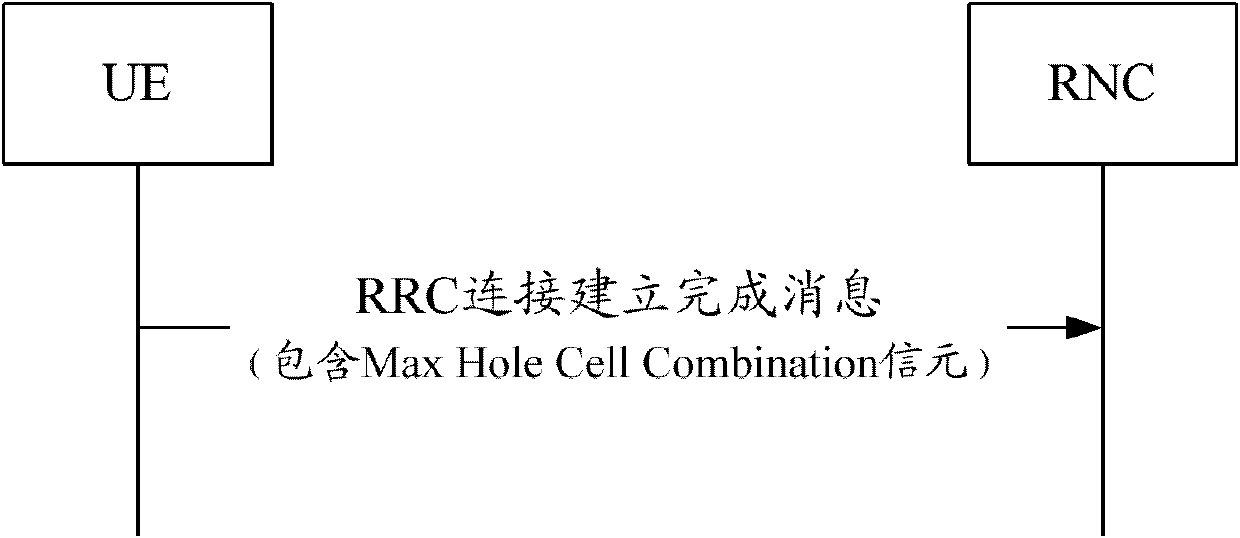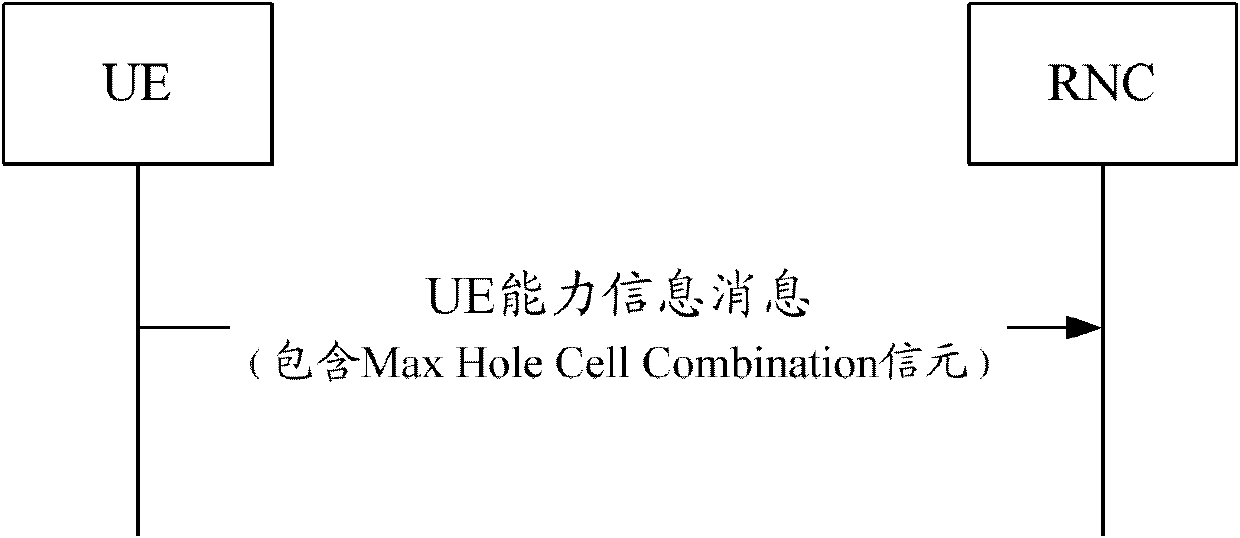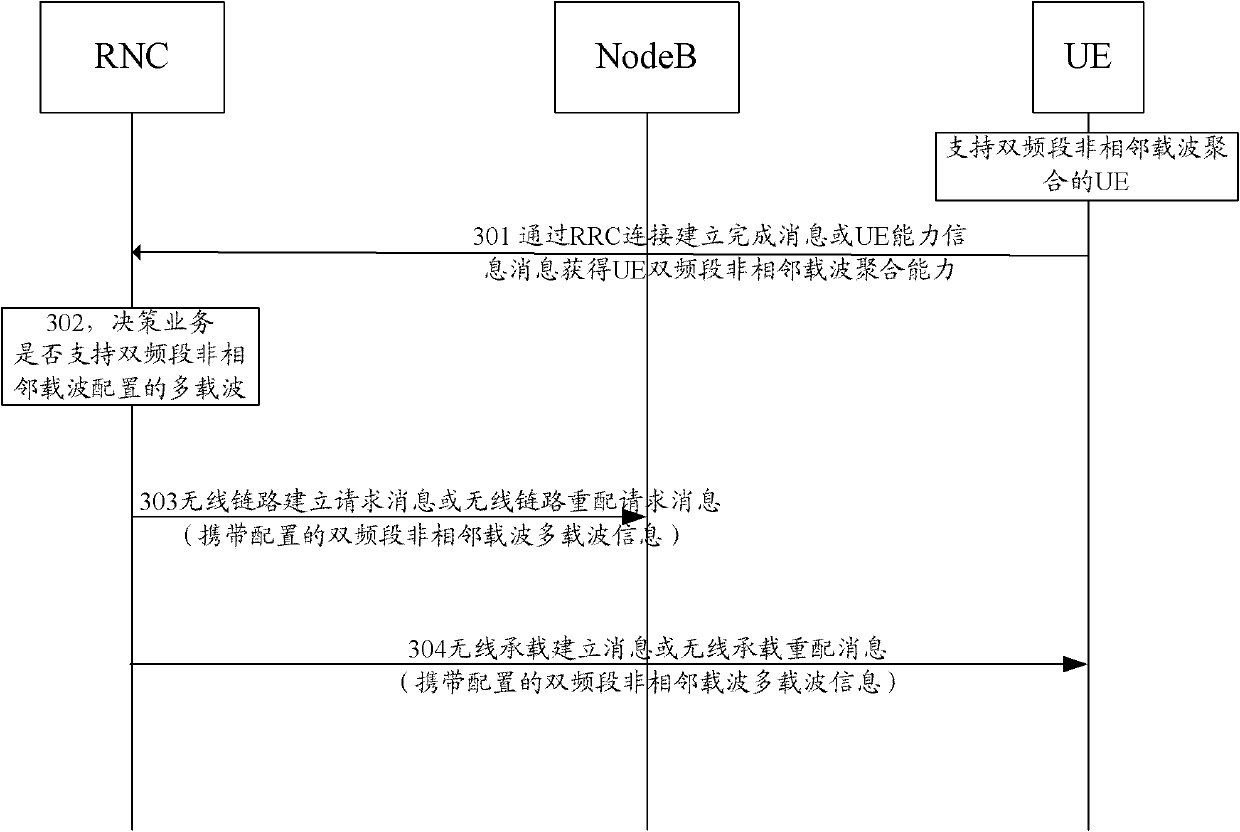Method and system for indicating user equipment dual-band non-adjacent carrier aggregation capability
A technology for carrier aggregation and user equipment, applied in multi-frequency code systems, transmission path separation devices, signaling distribution, etc., can solve the problems of complex non-adjacent carrier aggregation capabilities, unclear indication of carrier aggregation capabilities, etc., and achieve convenience Effect of Carrier Configuration
- Summary
- Abstract
- Description
- Claims
- Application Information
AI Technical Summary
Problems solved by technology
Method used
Image
Examples
Embodiment 1
[0035] figure 1 A schematic diagram of reporting the carrier aggregation capability supported by the UE, such as figure 1 As shown, when the UE supports dual-band non-adjacent carrier aggregation, the RRC Connection Setup Complete message sent to the RNC contains the newly added sub-information element Max Hole Cell of non-adjacent Carrier CombinationList in the radio accesscapability information element, which contains the UE A list of supported non-adjacent carrier aggregation capability combinations on each frequency band in each supported frequency band combination, and a new sub-cell Max Hole Cell Combination, which includes the inter-carrier support for non-adjacent carrier aggregation on each frequency band in each frequency band combination The maximum number of interval carriers. Specifically, as shown in Table 2 below, the part in italics is the newly added cell:
[0036]
[0037]
[0038]
[0039] Table 2
[0040] When the UE supports the dual-band non-a...
Embodiment 2
[0051] figure 2 A schematic diagram of reporting the carrier aggregation capability supported by the UE, such as figure 2 As shown, in this example, the UE includes the Max Hole Cell of non-adjacent Carrier Combination List and the Max Hole Cell Combination information element in the UE Capability Information message sent to the RNC to indicate the dual-band non-adjacent carrier aggregation capability. How to indicate is exactly the same as that in Embodiment 1, and will not be repeated here.
Embodiment 3
[0053] figure 1 A schematic diagram of reporting the carrier aggregation capability supported by the UE, such as figure 1 As shown, when the UE supports dual-band non-adjacent carrier aggregation, the RRC Connection Setup Complete message sent to the RNC sends the new sub-information element Max-Hole Cell of non-adjacent CarrierCombination List containing the radioaccess capability information element, which contains In each frequency band combination supported by the UE, the list of non-adjacent carrier aggregation capability combinations is added, and the sub-cell Max-Hole Cell Combination is added, which contains the non-adjacent carrier aggregation support on each frequency band in each frequency band combination. The maximum number of interval carriers. The protocol description is shown in Table 3, and the parts in italics are new cells:
[0054]
[0055]
[0056] table 3
[0057] When the dual-band non-adjacent carrier aggregation capability is supported, the li...
PUM
 Login to View More
Login to View More Abstract
Description
Claims
Application Information
 Login to View More
Login to View More - R&D
- Intellectual Property
- Life Sciences
- Materials
- Tech Scout
- Unparalleled Data Quality
- Higher Quality Content
- 60% Fewer Hallucinations
Browse by: Latest US Patents, China's latest patents, Technical Efficacy Thesaurus, Application Domain, Technology Topic, Popular Technical Reports.
© 2025 PatSnap. All rights reserved.Legal|Privacy policy|Modern Slavery Act Transparency Statement|Sitemap|About US| Contact US: help@patsnap.com



